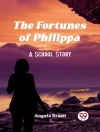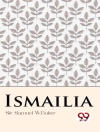I know what it is to feel lonely and helpless and to have the whole world against me, and those are things that no men or women ought to feel. When adventurer Richard Hannay is alerted of an assassination plot that could completely take down Europe, he finds himself caught in a tangled web of politics and must run to his home of Scotland to evade arrest. In order to prevent his arrest and the destruction of his country, he must figure out what the baffling clue is that will determine the fate of millions: the thirty-nine steps.
Achetez cet ebook et obtenez-en 1 de plus GRATUITEMENT !
Langue Anglais ● Format EPUB ● Pages 80 ● ISBN 9781666567540 ● Maison d’édition Dreamscape Media ● Publié 2022 ● Téléchargeable 6 fois ● Devise EUR ● ID 8375638 ● Protection contre la copie Adobe DRM
Nécessite un lecteur de livre électronique compatible DRM












